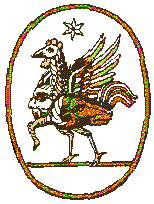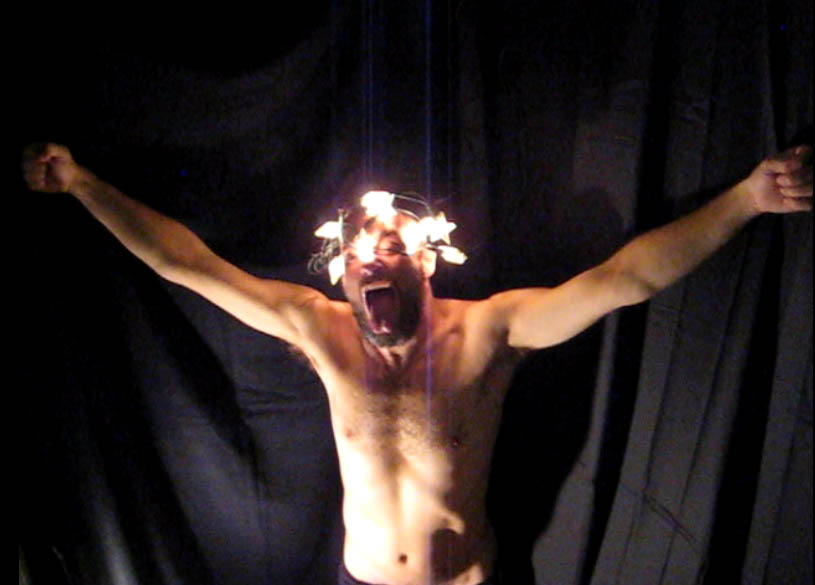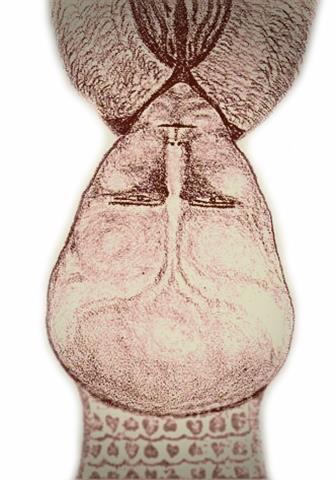ORDO TEMPLI ORIENTIS PHENOMENON
background information
CORRECT GNOSTICISMPeter-Robert KoenigWhat exactly Dada is, even the Dadaists don't knowOnly the Chief-Dada knows And he isn't telling. Johannes Baader |
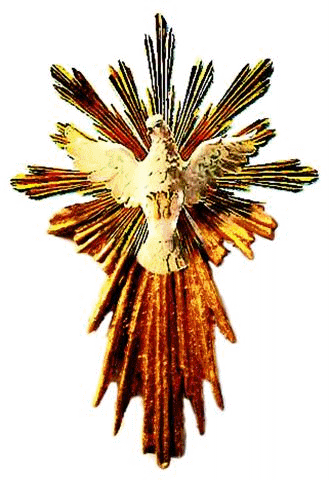 |
|
Here follow some textual examples which document the various sexmagical/gnostic orientations, and especially that of Arnoldo Krumm-Heller and his sphere of influence. This chapter is a continuation of researches into
"Spermo-Gnosis and the O.T.O." and continued in "Smoke Gets In Your Aiwass". The consumption of sexual secretions borders on anthropophagia, the assimilation of selected individuals who possess awe-inspiring powers, in order to neutralise or even to use them. This ethnological meaning is probed in "Tristes Tropiques" by Claude Lévi-Strauss. [1] The Gnostic aim is to release the human from his stifling entanglement with the physical universe, and to help the pure Spirit in its return to its Divine potential. [2] One common characteristic of all the Spermo-Gnostics, that are introduced here, is a rejection of Sexuality and its reduction unto the male physiology. Orgasm for pure reasons of lust is avoided, unless ejaculation is refrained from, or the intention is directed to drift away from the immanent orgasm and concentrate itself upon wishes that under the circumstances appear worldly in the extreme. Sperm remains the point of focus. In the enthusiastic high of the genetic and gnostic superiority of the male, femaleness vegetates in a bizarre no-mansland of androgynous necessity and almost reprehensible superfluousness. The female Logos remains mute. Peter Sloterdijk calls the Gnostic find of the Nag Hammadi "Secret documents of the World Spirit". [3] For the members of the secret societies of the New Age, however, Gnosticism has turned out to be, in my opinion, no more than a banal middleclass living room version of ecstasy. Organised forms of Gnosis cannot generate Enlightenment, no matter how banalised and stage-managed. The primacy of the soul yields to marketability, wherein the Gnosis becomes a registered Church or corresponding club. The revolution of sexual lust is conservatively regulated by means of club-statutes. Sloterdijk's distinction between libertine and ascetic Gnosis is illuminating: "The amoral style leads to a homeopathic ascetic: this weakens the Evil of sin, in that they are committed thoughtfully and ironically, as if by quota: the Gnostic embraces the sin and experiences thereby a critical decay in his own body, finally to climb out of the gutter fully burnt out. — The world is a pornographic purgatory, from which to filter the immaculate Pneumata. The abstaining style, in contrast, applies allopathic methods against the sickness of the World: against the poisons of the cosmos it administers immediate flight from the world as an antidote. Civil disobedience against the lower body, general strike against the astral works, bathings in tears, fasting of the heart." [4] |
"It has come to our attention, that there are some (people) on this earth, who take the male sperm and the female menstrual blood, and put it in a lentil dish and eat it." [5] |

| Whereas Reuss' Gnosticism could be categorised as a rather libertine Manicheism [6] mixed with Ophitism, [7] (or Ophism) as well as Tantrism, [8] Krumm-Heller leans more towards the so-called Barbelos-Gnostics. In Krumm's Eucharistie-Ritual, Jesus identifies Barbelos as his mother, [9] and in "La Iglesia Gnostica" Krumm explains, in "nuestra Iglesia", that the "Pistis Sophia" is the "Libro Sagrado." [10] |
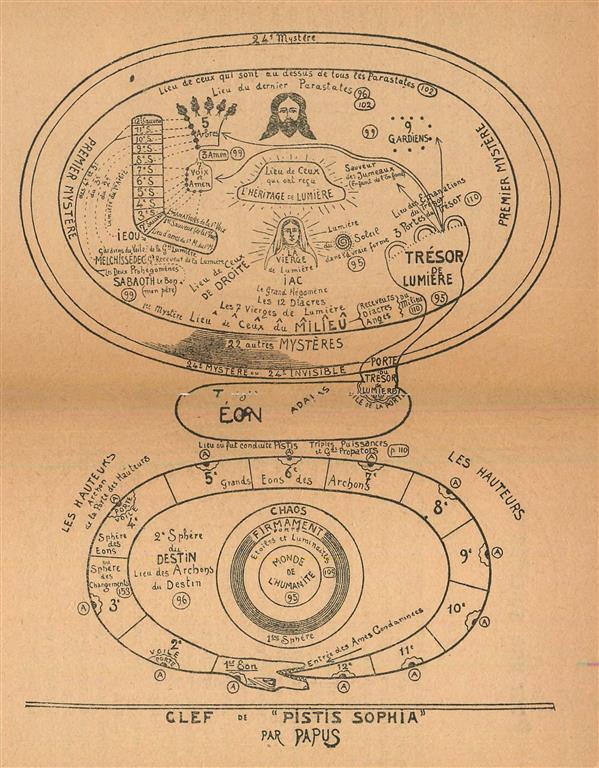
|
Pistis SophiaA first edition of the 4th Century Coptic work, "Pistis Sophia", was printed in 1851 in Berlin. The book contains complicated and long-winded discussions between the arisen Jesus and his disciples about the fall and redemption of the divine mother of the seed, "Pistis Sophia", and Jesus' revelations. In 1905 Carl Schmidt published a version of "Pistis Sophia" (together with the "Books of Jeû", concerning the Gnostic Heaven and originating from the same time period.) Even today this version sets the standard and remains deemed the most valid edition. It is very likely that Krumm-Heller would have been familiar with the Schmidt edition. [11]As an example for the people, the fall and redemption of a female being, namely Barbelos, are carried out in "Pistis Sophia". Barbelos represents the female aspect of the Father, a sort of Gnostic Mother-goddess, one with her daughter, Pistis Sophia, and at the same time androgynous, which of course for most Gnostics is an expression of completeness. Barbelos is identified with Maria, with the bearer of Truth, with Matter. By her uncontrolled lusts, [12] she brings about her catastrophic fall and the disintegration of the cosmos, and can only return to the Pleroma by means of the male assistance of Jesus. The Barbelotic system is not uniform however. "Pistis Sophia" and "the Books of Jeû" accord the "Home of Barbelos" [13] to different Spheres/Archonts, [14] which can be interpreted on the one hand as ascetic and on the other as libertine depending on the fingering of various over-subtle dustmotes in the texts. This latter has been done by the Church father and Bishop of Salamis in Cyprus, Epiphanius (died. 403), in his script "Panarion haereses". Even though any explicit libertinism is rejected in "Pistis Sophia", we find in the literature reports regarding Barbelites who are accused of "obscene rites". [15] According to the Phibionites and Stratiotics, who are counted amongst the Barbelites, the desirable Lightseed is inherent in the Sperm and Menstrual blood [16] — this has certainly found its magical expression with Aleister Crowley's libertine spermo-gnostic Thelema. [17] "Pistis Sophia" accepted by Krumm-Heller (and the 2nd Book of Jeû") clearly turns against such rites. [18] "Such people will be [...] destroyed and dissolved," [Jeû:] "But their God is Evil." Even though for both "la redencion reside exclusivamente en el acto sexual," [19] we find here then deep-seated divergences between Crowley's and Krumm-Heller's concepts of redemption, which may explain why they ignore each other, and why Krumm-Heller never even mentions the O.T.O. [20] The question remains however, why Krumm-Heller never expunged the Thelemic references in the Initiation and Mass rituals of the Fraternitas Rosicruciana Antiqua. Could it be that Krumm-Heller was not entirely averse to an entirely Crowley-free concept of "Thelema"? This concept appears as a male aeon in connection with Jesus in another Barbelotic script together with concepts of Nous and Logos (while Barbelos is accompanied by female Aeons). Krumm-Heller appears to be one of the few Neo-Gnostics who feels chiefly close to the "Pistis Sophia," to Barbelos. [21] His Gnosis remains Christian and "ascetic" — his Masses contain no Reuss-Crowleyan Sperm passages, [22] no invocation of Kyrios Phallos nor mystic-tantric ceremonial representations of the Gestation of the Universe. [23] Since the French Neo-Gnostics, even though they profess to female-unfriendly Valentinism, [24] do consecrate women as priests and bishops, Krumm-Heller cannot befriend them at all. These same grounds may well have moved Reuss to create his own Gnostic-Catholic Church, at least on paper. Baphomet is, according to Krumm-Heller, an aspect of Abrasax, and thereby "Fuerza Cristónica" and "El Salvador del Mundo". Thelema is "la voluntad actuante en la luz". [25] "Looking for God in exciting new ways" [26]In 1895, into the birth-years of the (Valentinian) Gnostic Catholic Church, the first French translation of "Pistis Sophia" appears. [27] The theosophically-spiritualistically inspired protagonists of this church advocate a seemingly continuously changing Gnostic conglomerate of all the available teachings, bound together by a strictly hierarchical church system. [28] To create order and overview, Louis-Sophrone Fugairon/Sophronius [29] composes his 400 page strong "Catéchisme Expliqué de l'Eglise Gnostique" [30] (in Paris on the 25/3/1899.) Immediately following the foreword, in an "Avertissement," Fugairon comes to speak of the "Pistis Sophia". However the complicated system is accorded hardly as much space as Simon the Magus or the Valentinians, even though the magical tables of both "Books of Jeû" (which are appended to the Text of "Pistis Sophia" = Codex Brucianus) are given close attention. [31]In "Die Gnosis", a two-volume work by Eugen Heinrich Schmitt, recommended by Reuss, we find the following criticism on Fabre des Essarts: "Under "Sophronius", however, who, as Gnostic bishop of Beziers, published an explanatory catechism regarding the Gnostic church (by Sophronius, évêque de éziers, I-IV, Paris 1899), the teachings fell into a doubtful catholicising current. Amongst other things the Transubstantiation of the Bread and the Wine, that is to say, the Fetish-faith of the Catholics, were taken on by Sophronius", and sanctioned with curious figurines fashioned in coarse materials. The fact that such a position precludes any depth of contemplation, and that the whole decayed into a fantastical idolatry, requires no further detail here. The French occultists such as Papus and Sedir penetrate the matter with a much purer spirit and immeasurably more deeply and appropriately than these supposed Gnostics." [32] In all the scripts of the French Gnostics Barbelos retains only sparse mention — even though recognition of Valentinus' authorship of "Pistis Sophia" is demanded. With the following catechisms [33] however, the basis is laid for a Neo-Gnosticism, now libertine, now agnostic, (the Ethnography whereof would unfortunately burst the confines of this study.). [34] In 1906 appears in Belgium, the libertine interpreted "L'Eucharistie" of Clément de Saint-Marcq, in which the Eclectic Theodor Reuss sees the Secret of the O.T.O. published: [35] the Union of Man and God by Assimilation (i.e. the consumption of Sperm), as taught by Jesus Christ. [36] Consumption of Sperm for magical reasons is anchored in the O.T.O. as the VIII°. The meaning of Sperm as Logos-bearer however, is not found until the IX° — here vaginal secretions amongst other things, are added. Only through Crowley does the IX° mutate into a purely magical grade, in which the sexual secretions are smeared on talismans in order to conjure assistant spirits and demons. Common to all sex-magicians and sperm-gnostics (whether ascetic or libertine), is that in the sperm the center of the human-god destiny is seen. As Homeopath, Krumm-Heller only needed to apply the following "magic" thought: In Homeopathy, the head, the brain is the center and portrayal of the godly order, the source of all things. For the sex-magicians the spermatozoon is the representation of the Sun/the Universe. "The glans of the penis corresponds most naturally to the form of the human brain." [37] The consumption of Sperm, however, is not homeopathic (see below discussion in the text example of Clément de Saint-Marcq). Theodor Reuss and Aleister Crowley found well-fertilised Gnostic soil for their libertine seed, [38] even though neither goes into great detail about their sources. [39] It is particularly noteworthy that Reuss completely ignored the rich literature of the French Gnostic occultists, even though he had been in contact with Papus since at least 1901. [40] Is he holding to the later rather restrained statement of E.C.H. Peithmann, regarding who exactly is a Gnostic?: "He who requires to draw up neither logical conclusions, nor historical researches, nor even moral considerations." [41] [More on Peithmann below] Of course any academic Gnostic publication must be a traitorous thorn in the eye of the Neo-Gnostics, since therein are the worked up details of the Spermo-Gnostic practice, the which is not exactly encouraging for recruitment. Peithmann elevates himself above the mists of the academic Gnostic publications: "For the seeker, none of these scripts that are available in bookstores come into consideration." [42] Theodor Reuss' mandatory reading for O.T.O.-Members [43]While not otherwise overly feeble, Reuss does indicate amongst others C.W. King "The Gnostics and their remains" (London 1864, 1887, Reprint San Diego 1982) as reading material also recommended in H.P. Blavatzky's "Secret Doctrine". Here Gnosticism is connected with Hinduism, Buddhism, Qabala and Magic. King (1818-1888) was in his time the greatest collector of Gnostic gems, now in the Metropolitan Museum of Art in New York. [44] Reuss is not likely to have recommended the magic orientated book for its extremely gentle mentions of Spermo-Gnosis, rather because of the treatment of the desirable themes of Templars, Rosicrucians, Freemasons, Adam Weishaupt's Illuminati, and Baphomet (here as Osiris or as Barbelos). Even a century before Michael Paul Bertiaux (Ordo Templi Orientis Antiqua, La Couleuvre Noir,) C.W. King writes about the "Machines of the Gnosis" (p. 104).Eugen Heinrich Schmitt's, "Die Gnosis", (Leipzig 1903, sequel in 1907) [45] unfolds itself similarly Gnostic and equally as un-academic. Schmitt tries to explain the various Gnostic systems, turning clearly towards the occult orientated readers and against the interpretations of the church fathers, who deliberately mutilated their textual examples. "Pistis Sophia" occurs regularly in his work, Spermo-Gnosis however not at all.Schmitt corresponded with Jules Doinel du Val Michel and rites in the foreword in Fabre des Essarts' "Unity of the Gnosis of all schools." Fabre's Catholicism in the Gnostic-Catholic church, however, he meets with scepticism (see citation in previous sub-chapter). Similarly to C.W. King, Schmitt touches on Freemasonry, the Illuminati, Theosophy, and cites names such as Hugo Vollrath, Franz Hartmann, Nietzsche, Rudolf Steiner, and many others. The Baphomet of the Templars remains for him however "completely in the dark." [46] Reuss' O.T.O. behaves itself as Christian-Gnostic [47] and even Crowley used Christian-Gnostic elements up to 1912 [48] and only built up his own O.T.O.-branch with newly invented (so-called Thelemic) word-shells from 1914. [49] Neither does "Do what thou Wilt" originate from Crowley himself, nor his "Love is the Law". The first can be found with Augustinus, Rabelais, Schopenhauer or Nietzsche [50] — the latter in a letter from Kellner to his hotly adored wife Maria Antoinette Delorme. "The closest way to the absolute truth is 'Love'. It is the Law of all Laws." [51] In Reuss' mandatory reading of G. Herman (Max Ferdinand Sebaldt, alias Maximilian Ferdinand) "Sexual-Magie. Genesis. Sexual-Mystik", (Leipzig 1899-1903) one finds the sentence "Love is the fulfilment of the Law" (p. I:14). At least one year before Crowley 'invented' it. |
| Herman's 5 volumes appear to be Reuss' main source for the "Bausteine zum O.T.O.-Tempel". With references to Blavatsky, Stanislaw Przybyszewski, Schrenck-Notzing and other Occultists [52] Herman undertakes a well-informed Tour de Force through the occult-scientific activities and publications up to 1900. | 
|
|
There are not only sparklingly detailed descriptions of the physical make-up of the sexual organs, but also guidance to moral behaviour with regard to masturbation, coitus interruptus (both reprehensible) and propaganda towards "expedient use of the force of the creator" and that in service to "sexual and racial hygiene". It touches not only on the theme of "plague of Jews" but also gives guidance on the breeding of "suprasexual" psychocratic noblemen. This "Übermensch" finds the "Way to redemption not in the contempt of sexual activity" rather in the "beauty of the sexual instinct". "Marital duty" becomes "Religious duty", and thus once more the "main work of the new female: motherhood". Which "techniques" does Herman offer? One averts threatening masturbation, by touching one hand to the back of the head (cerebellum) and the other to the genitals. "Thereby we achieve an equalisation of the nervous tension." The noble Übermensch, "Germanic, earthly, robust," practices Karezza (Herman refers to the Christian Oneida-Community), when he isn't saving his sperm for the breeding of "Nobel-borns". "The whole nervous system is strengthened and empowered by the retention [of sperm] or absorption of sperm [without Ejaculation]" These are the "sexual-religious duties" of the "third gender," that delights in erotic love with women or men in equal measure. According to Herman, pure homosexuality (whether female or male) brings about physical consequences (or has these as its cause). The consumption of sexual secretions (Reuss' and Crowley's favourite theme) is however also found in his chapter on "Defloration und Necrophilia" as "a sort of bipolar eating mania" devoid of religious meaning. Satanism is felt to be "a phenomen of Worldcity-degeneration leching after new stimuli."
There remains "before all things the sewing machine is the great seductress to lonesome sensuality", Herman's citation from Pouillet's "L'onanisme chez la femme" (Paris 1880) and mandatory reading for Reuss' O.T.O., as follows (scene: a factory for military uniforms): "In the midst of the regular whirring of about 30 sewing machines, I suddenly heard a machine running at a much higher tempo. I turned to the relevant seamstress, a brunette of 18 to 20 years. While automatically tending to the piece of work she was sewing, her face brightened, her mouth fell open slightly, her nostrils trembled, her feet moved the pedals with steadily increasing speed. Shortly thereafter I noted a fixed gaze, her eyelids sank, her face became pale, and she threw back her head. Hands and feet suddenly paused and stretched themselves: a suppressed cry, followed by a deep sigh, lost itself in the noise of the surroundings." [53] Thus far on the topic of eroticism and uniforms as building blocks of the O.T.O. temple.
|
O.T.O.: Without Value — Sans ValeurEven though he is familiar with Papus and most of the occult protagonists of his time, Arnoldo Krumm-Heller derives his Gnostic succession from his German countryman Dr. Phil. Ernst Christian Heinrich Peithmann/"Basilides" (born. 3.5.1868). Heinrich emigrated to the USA in 1894, worked sporadically in Germany and only remained there for any significant period from 1920 onwards. [54] From 1903, Peithmann's "Scripts for the Educated and the Thinking" introduce "Gnostic Fathers" as a part of the series "Biographia Antiqua" (Start 1900). In 1904, his incredibly long work "Der Gnostische Katechismus" [55] appears. In Südhemmern/Westfalen in 1920 Peithmann calls his "Gnostische Mysterienschule"/"Altgnostische Kirche von Eleusis" into life, which is not exclusively attached to the "Pistis Sophia", rather follows a cosmogony of Peithmann's own construction (see following text example.) "Peithmann et Reuss avaient échangé leurs systèmes. Selon Peithmann, les grades de l'O.T.O. étaient sans valeur." [56] This may be a further possible cause of Krumm-Heller's silence with regard to O.T.O. From 1927 Peithmann was publishing in Henri Birven's "Hain der Isis" [Grove of Isis], in which from 1930 onwards, Crowley is regularly denounced. In the 1990s, Ruben Pilares Villa in Peru acknowledges from his documents that Peithmann/"Basilides" must have given the succession to Krumm-Heller in 1934. That must have occurred in America since Peithmann emigrated to the USA in March 1933, (under duress.) (died 4.7.43). Krumm-Heller "fue consagrado [but before 1930] [57] Obispo de la Iglesia Gnostica con todo el ordinal de estilo y en un congreso que celebraron los grandes dignatarios de la Antigua Iglesia Gnostica en Londres, hace algunas semanas, se resolvio a levantar de su sueno a esa Iglesia Santa. Visite al Patriarca Basilides y este confirmo mis poderes para crear congregaciones y paroquias" in Spain and America. [58] | 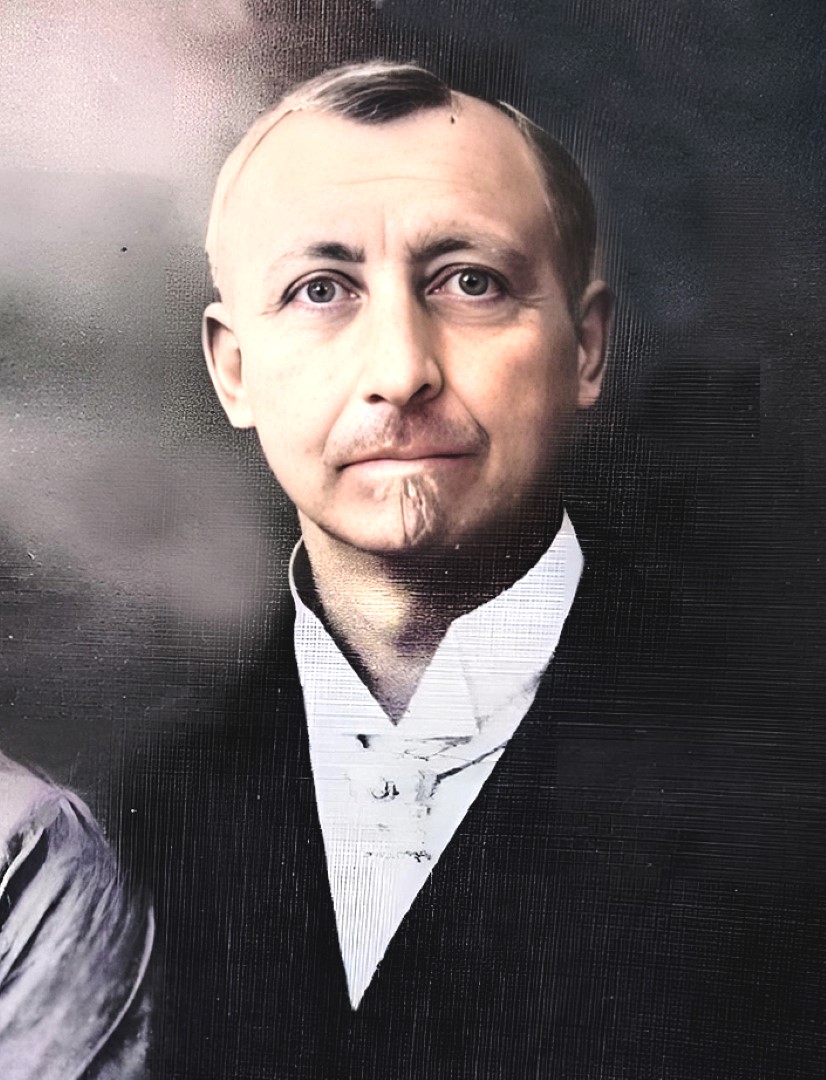
|
|
It is possible to assume that Krumm-Heller follows the Gnostic ideas of Peithmann, [59] who wishes to liberate the Seed (thus also the Logos) by means of a "pure sexual life [...] removed from servitude" to Matter. [60] The sexual magic of the F.R.A. is accordingly based on the aversion to ejaculation. [61] Peithmann's demand, that the generation of children is to be refrained from, is not followed consistently by Krumm. He appears, like Reuss, to have found a balance between libertine way and ascetic gnosis. This is in accord with the homeopathic teachings of the moderation, the Golden Middle Way of the Ancient Greeks, for the purpose of maintaining the balance on all levels of human existence. In contrast Aleister Crowley's libertine Gnosis, demands Optimum by means of Maximum. [62] Christian feelings of guilt and Gnostic rejection of the worldly penetrate even for Crowley: "Pleasure as such has never attracted me. It must be spiced by moral satisfaction." [63] E.C.H. Peithmann: Gnostic Catechism — AsceticismPeithmann: "What does this pompous being, the demiurge or Devil actually mean? It is the fantastical beauty and captivating appeal of Nature, that numbs the senses, that enchants and dumbs the soul, seducing it to reincarnation. With the illusory splendour of magnificent forms, colours, tones and scents, Nature covers up the scents of murder that lie beneath, and hides the lurking foulness and corruption. Unto this come also the sad joys of the body, that forever promise satisfaction but never make true: above all the joy in eating and drinking and the carnal congress of sensual lusts. [Rom. 7:18, 8:12-13, Gal. 5:16-17, 19-20, 5:24, 2. Petri 2:10] [64]How deep is the descent into Matter? Until the profoundest depths of Chaos are reached, until the pilgrimage leads the tired Wanderer along the outer boundaries and back unto the Highest, the Spirit.(Read: Empedocles.) [The fallen Adam and Eve are cared for by Mother Wisdom (Pistis Sophia after Her fall?):] To what end the instruction in wisdom? They were given instruction that they should seek foodstuffs to maintain their bodies. Sated by the sensual, they then came into union in carnal congress. What influence did the body have upon the soul? Seduced by the sensual pleasures of eating and drinking and the lower sexual union of the animal sort, the people became ever more entangled in the material and eventually the soul became the complete slave to the body, whilst the inner light was ever darkened and forgotten. The body, that was to be a useful and willing tool, became the tyrant of the human mind and his soul, and so the soulful man became the material man as we know him today. [Rom. 6:16-19, 7: 23] What is the nature of the confusion in the ways of nutrition? While man first ate of fruits and herbs, over time he fell into the unnatural practice of eating dead animals, which did not fail in its corrupting action. [65] Where else has the degeneration of man shown itself even more strikingly? In his sexual relations. [Read: Rom, Chapter 1.] What is the root of whoredom and adultry? The world-soul, abandoned by the holy spirit, venged itself on its departed love, by causing Babelon or Aphrodite to cause adultry and whoredom amongst men. With this she thought to plague the divine spirit inhabiting man, and to sadden it, by causing it the same fear and jealously as she suffered. What meaning does the Gnostic Church accord to marriage and sexual relations? Carnal congress belongs to the lower world, that of evil. Marriage, which the church has made a holy act, even a sacrament, after the example of certain heathen folk, is an institution of the demiurge and the world-tyrant. The gnostic church knows and teaches that marriage and the generation of children are a creation of the demiurge and nothing man can do can damage the demiurge more painfully that to keep to a chaste and renounced life, [66] namely staying far from that which the lord of this world has ordered." [67] "The Nassenes or worshippers of the true Brazen "Serpent"Peithmann "The Nassenes received their names from the hebrew word "nachasch", Serpent, because they sang songs of glory to the serpent. Snake in Greek is "ophis", thus they were also known as Ophites [...] The hidden power of Sperm. In the evangelism according to Thomas we are told: "Who searches there, he will find me in children of seven years old. Hidden there, I will be revealed in the 14th age." Therefore the gnostics lay the original being of all things in the originating Semen. [...]Sexual abstinence: For such reasons the Nassenes celebrate the secrets of the "Great Mother" [...] they most strictly forbid any sexual relations between the Man and the wife." [68] "The Lightseed, the Holy Spirit, the Logos spermatikos, is the organ of true Knowledge [...] In the descent of the redeemer the first act of salvation is carried out upon the fallen wisdom in the upper world. His second or main work is carried out upon Earth, where by his mere appearance but also by his preachings, he reveals his unknown and unwitnessed Father. To his believers he brings new powers, so that they can despise and conquer the angels of the sexually creative Demiurge. The demons are dissolved and the disciples united with the Master, by means of the descent, Hell is tamed and judged, the devils are deceived by his humility and his despised form." [69] Just as Reuss in the O.T.O., Peithmann mixes up Gnosis and Hatha-Yoga in his Church.Peithmann: "Sexmagick is to be seen as the most important moment of the Gnosis. The gnostic makes no secret of the fact that in his view of the world and in occult exercises everything revolves around the great sexual treasure that the Lord expresses in the words: "For there are some eunuchs, which were so born from their mother's womb: and there are some eunuchs, which were made eunuchs of men: and there be eunuchs which have made themselves eunuchs for the kingdom of heaven's sake. He that is able to receive it, let him receive it! (Matth. XIX,12). This refers to a spiritual cut with a supernatural knife which succeeds in that which Dr Steinnach and his followers have tried in vain to achieve by means of unnatural operations: the growth of the puberty-glands or the inter-cellular tissues instead of and at the cost of the gonads. The visible resultant being the rejuvenation of the body, by means of the invigoration of the internal secreting glands. [...] [70] The same power that is normally used for mortal generation or as a means to lustful pleasures, is capable of a transfiguration that is impossible for the normal man even to dream of, a transfiguration that leads to salvation." [71]"Man and wife [...] can only redeem one another. One cannot abstain from the assistance of the partner if he wishes to be finally freed from the "Wheel of rebirth". The lections of the mystery school, existing in Südhemmern i. West [Those interested are requested to contact the "Gnostische Mysterienschule" Südhemmern i. West enclosing postage.] such as the course on gnostic breathing, the magical, mystical or esoteric courses are not intent on achieving some sort of amazing and spooky manifestation as in certain Tibetan schooling, rather they go towards the Immediate Work. The immediate return of the "lost son" to God — that is the objective of the Gnostics. [...] [72] According to their most secret, purely verbally transmitted instructions, the main effort is to create a flow of power to the roof of the skull. By this exercise it is intended to make available the entire sum of energy that is usually expressed in the animal, that is the sexual act. [...] The creation of a glow in the body is known as 'Tumo'. In the secret teachings the most effective Tumo plays the role of a gentle fire, that warms the generative fluid and leads the powers therein through the fine nerve-channels into the roof of the skull, where instead of carnal lusts, mental and spiritual bliss are generated." [73] Peithmann distinguishes the upper and lower Christ. Without going intensively into the question of the corresponding gnostic superstructure: "Nothing dawns on him [a critic], when the Gnostics disown the jewish Messiah, despise the world-dominators and their lusts, revile the lords of sexual procreation, belie the external resurrection of Christ and reject the bodily creations of marriage." [74] Peithmann, however condemns homosexuality, as "Sodom's Sin [...] bestial aberration of Gomorrah". [75] Even though Peithmann assembled his own Cosmogony from the fullness of the available Gnostic primary materials, his simple Gnostic catechism bears more than a passing resemblance to that of Louis-Sophrone Fugairon/Sophronius (even down to the chapter divisions and headings). This appeared only five years before in Paris: the relatively demanding "Catéchisme Expliqué de L'Eglise Gnostique." Essentially the French Gnostics breath a similar Spirit: "Comment l'homme a-t-il désobéi à la loi concernant sa reproduction? Par des accouplements illicites, non seulement entre homme et femme, mais avec les femelles de l'anthropoïde précurseur. L'Eglise gnostique n'a-t-elle pas instituté des degrés d'initiation qui font parcourir à ses membres les diverses étapes de la vie religieuse? Oui, et ces degrés sont au nombre de sept, savoir: le borborianisme, le coddianisme, le nymphionisme, le stratiotisme, le phibionisme, le zacheïsme et le barbelitisme." [76] Joanny Bricaud later changes the names of the individual grades, the Barbelites become "Servants of the brazen Serpent or of the Star." Peithmann even names the following "true Gnostics" in exactly the same order: the Borborians, Coddians, Stratiotics, Phibionites, Zacchaeans and Barbelites. [77] He cites Fugairon nearly word-perfectly and adopts the "Grade system" of the French Neo-Gnostics. The source of this enumeration is Epiphanius, Panarion XXV 2,1-XXVI 13,7, in which the Spermo-Gnostics are introduced. Never is it made clear however, whether Peithmann rejects the libertine practices attributed to these groups, or whether he practices them himself: that is to say — the offering of Sperm to Christ (through consumption) and the use of menstrual blood as the "Blood of Christ" for "spiritual nourishment". The main issue is the avoidance of siring children. In his discussion of Eugen Grosche's "Magische Briefe: 8. Brief. Sexualmagie" (Wolfenbüttel 1927), Peithmann's only complaint is that the libertine sex-magician Grosche (founder of the Fraternitas Saturni) remains silent upon the topic of the "complete love of the Pneumatics" (People of Spirit), otherwise entrusting the misogynistic little book to the "advanced reading public". [78] More on Peithmann in the article about the Wandering Bishops. Even more Seeds of Light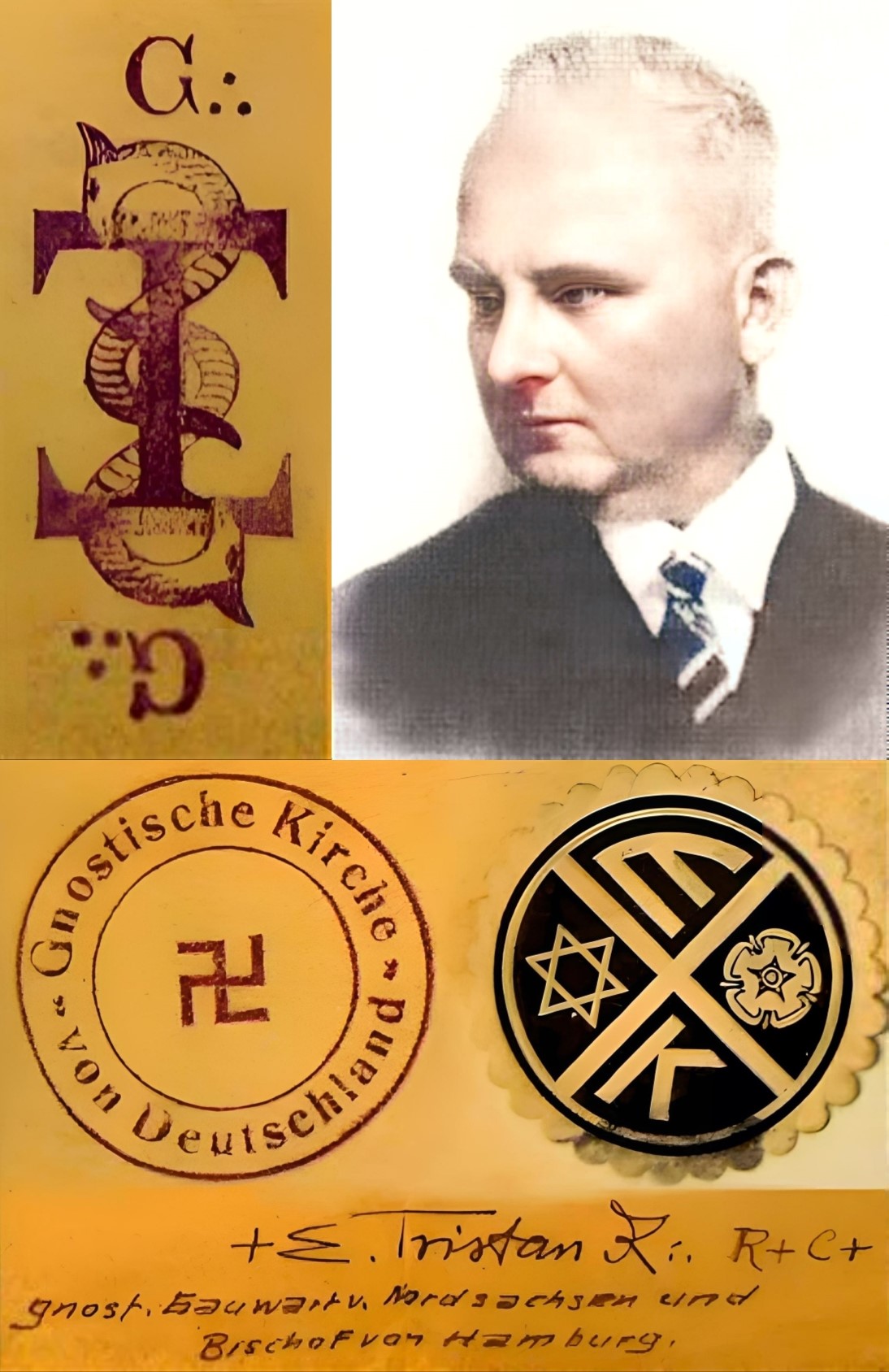
Another "associate" and member of Reuss' Ordo Templi Orientis recommends Peithmann to the potential public, namely the administrator/teacher Ernst Tristan Kurtzahn / Daiytanus / E. Tristan K. [79] In 1924, one year after Reuss' death, Kurtzahn published "Die Runen," which already makes a point of self-discipline with regard to procreation. The female must understand her "virginity" correctly, and give herself completely into "serving", since the "twaddle about the 'equal rights' of man and wife is most odious!" Kurtzahn also senses a racial origin of: "Our entirely un-Aryan Life. The pollution of our traditions, our literature, our Art, our entire public life by certain purposeful enemies of the Aryan race!" [80] One wonders how Reuss would have expressed himself to his companion. [81] A few years later Kurtzahn takes up the quill once more. In 1925, in the foreword to his "Die Gnostiker" (once again appearing in the Baumann Verlag Bad Schmiedeberg) the "Pistis Sophia" is accorded the status of an "actual" Gnostic scripture. Like Peithmann (whom Kurtzahn refers to as a contact address) and Krumm-Heller, Kurtzahn now admits to performing Karezza. In the aforementioned book, the misogynistic Kurtzahn cites one Valerie Gyigyi as "contemporary Gnostic", who distinguishes herself by a "high degree of insight." "The strong half is the man, who also received his seed as Law, whereas the weaker half even now bleeds from that place where the knot of Life once sat." [82] This Ms Gyigyi had found a place 11 years before in Reuss' "Parsifal und das Enthüllte Grals-Geheimnis" wherein Reuss revealed himself as her "Master".[83] The Sperm alone "is Spirit-bearer and as such only of Man" Kurtzahn now continues. "Man retains his Seed and uses it, the 'Son' the Light-seed, the lower Christ [as met in Peithmann's texts] as the way to the FATHER. For himself as well as for his woman." "Only through the Man can the woman be redeemed and that by the [purely spiritual] moistening with the seed of light." Kurtzahn clarifies the Way to Redemption: Man and woman lie together in a state of sexual arousal, open, by the use of breathing techniques [84] a new nerve-centre in the breast (i.e. a Chakra), and draw the Light-Seed over the laryngeal-Chakra into the pineal gland, exactly as taught by Kellner and Reuss. [85] E.T. Kurtzahn: The Gnostics. — About the Gnostic Catholic Church, Androgyn + Gynandria, E.C.H. Peithmann, Peryt Shou, and the immissio membri virilis in vaginam in avoidance of the ejaculatio seminis. During this Gnostic marriage "under no circumstance may an ejaculation seminis be permitted, stronger yet after a gentle immissio membri virilis in vaginam it is only allowable to make a gentle movement under complete willed control of both partners." [86] [Love under Will?] The rest of this pro-theosophical book is a dealing in death and the Devil, Gnostic textual examples and the revelation of crass misogyny. In the latter Kurtzahn sees himself supported by Hans Blüher. In the advertisements: Peithmann's 'Gnostischer Katechismus', Reuss/Crowley's 'Gnostic Mass' and Reuss' 'Aufbau-Programm der gnostischen Ur-Christen O.T.O'. More on Kurtzahn in the article about the Wandering Bishops. Chevalier Le Clément de Saint-Marcq: "L'Eucharistie"In 1906, the 38-page brochure of Chevalier de Saint-Marcq appears, in which Reuss sees the very highest O.T.O. secrets laid bare: L'Eucharistie. [87] In 1914 Reuss points to the sins of sexual loneliness (= masturbation) in his "Parsifal" and he mentions Saint-Marcq as a quasi-remedy.Fascimile of L'Eucharistie re-printed in: P.R. Koenig: "Der Grosse Theodor Reuss Reader", ARW, Muenchen 1997; Reuss called this pamphlet a revealing of the central secret of the OTO: only sperm contains the Logos: no women needed. Reuss wrote to Le Clément the following meaningful lines (we carefully reproduce his jargon): "I enclose two numbers of the "Oriflamme" which will show you that the Order of the Oriental Templars is in possession of that same knowledge contained in your "L'Eucharistie"". In effect, we find in the "Oriflamme", published in 1912, this, which clearsthe matter: "Our Order is in possession of the key which opens all the masonic and hermetic secrets: it is the doctrine of sexual magicc, and this doctrine explains, leaving nothing in the dark, all masonic symbolism, every religious system". The quote is in chapter X (La question du satanisme) of René Guénon's "L'Erreur Spirite", originally published in 1923. [88] The fact that Reuss printed and published his Parsifal-manuscript in 1920, indicates that, despite his comrades in arms being Kurtzahn, Peithmann, Krumm-Heller, etc., he retains a penchant for the libertine interpretation of sex-magic. The adherents of the two orientations generally disapprove of each other. [89] Who is this Saint-Marcq? In 1804 the Parisian Doctor Bérnard-Raymond Fabre-Palaprat (1773-1838) believes to have discovered the papers of the "original" Templars and establishes his Templar order one year later. He consecrates the radical socialist and former catholic Ferdinand-François Châtel (1795-1857) as a bishop and since this time history seethes with the offspring of this Order and its church. [90] One example is the poet Joséphin Péladan (1858-1918), who annealed his order ("Ordre de la Rose-Croix du Temple et du Graal," that bears the early O.T.O.-Lamen since 1895) [91] with that of Gérard Encausse/Papus'. The succession of the Order of Fabre-Palaprat lives on in Papus' "Independent Group of Esoteric Studies" and its Belgian branch KVMRIS. One of the "secretaries" of the KVMRIS is the Chevalier de Saint-Marcq. [92] Since Aleister Crowley was surely mindful of Saint-Marcq in his chapter on "The Eucharist" in "Magick in Theory and Practice" (Paris 1929), [93] several (translated) excepts follow. Saint-Marcq: "The host is not an image, nor symbol of divinity: according to catholic faith it is divinity itself, at the same time materially and spiritually present in the person of Jesus Christ, whose conscience and sensibility are entirely present and alive in the smallest particle of a consecrated host." Here the teaching, "that Christ entrusted into the ears of his disciples:" [Follows John VI, 47-55, from that: "He who eats of my flesh, and drinks of my blood, has eternal life."] [94] "How does a man give of his flesh to eat and of his blood to drink without cutting himself or rending his limbs, without injuring himself, without damaging the integrity of his body? We have no choice. We are obliged to take that which science furnished us with: the procreative semen is a comestible material, semi-solid, semi-liquid, which therefore can be eaten or drunk; it is at once flesh and blood [...] it is always the same act repeated with the same words, and the same effects, which still brings to life among us, in thousands of different places, the figure of the founder of Christianity." Saint-Marcq now brings in texts from the Bhagavad-Gità, finding for example. "VII.8. I am, so speaketh God, the masculine force in the Man" or "IX.18. I am the immortal Seed" and draws in Egyptian and Greek examples. "This universal belief in the possibility of establishing a bond between man and God is therefor anything but a local superstition." Of course there is never any need for "congress with the opposite sex", and that brings us to the XI°. [95] Saint-Marcq calls this "agape, du grec agapo." Long before Crowley. In 1910 the Chevalier's sequel appears: "Les Raisons de l'Eucharistie," from which however, nothing notable seems to be able to be drawn. Interestingly, the homeopath Krumm-Heller also sees the Sperm as half-fluid/half-solid. This astral liquid is for him the "mediador," that is to say "Cristo," from which can be concluded that the power and the essence of the true conveyor can be found in the spinal marrow and the genitalia. [96] Yet Krumm-Heller strives for androgyny, needs the female and rejects masturbation and homosexuality. Krumm-Heller: "En el acto sexual debe separarse a Dios de la bestia, al angel del macho bravio. La voluptuosidad carnal ha sido la que más ha denigrado al hombre, y hay que tener en cuenta que en ese momento, en un extasis de amor, debe confundirse con la Fémina [...] En cuanto a la Trinidad, el Padre-Dios en un extremo y la materia en otro, no pueden ser entrelazados sino por Cristo como nexo de unión. Pero el Cristo nada puede hacer sin elauxilio de la Serpiente, ya que la fuerza y el poder ólo residen en ella. En sus misterios encontramos pura fisiologia. El Padre es la cabeza, el cerebro increado. En su base y en el extremo opuesto, la material, el organismo duro concebido por la carne. En el medio, el líquido, el semen creado por si mísmo." [97] Isopathy?Even when the sperm is seen as the bearer of the holy logos, it can hardly be applied as a homeopathic remedy, since the similarity-concept of the homeopathic medicine is based at the level of the holistic nature of the individual general symptomatic condition and the nature of an underlying illness. [98] In order for Sperm to have pharmacological effects as a universal homeopathic remedy, it would need to be an actual medicine first, which as a material substance it is not. It would only become such if it underwent the process of Hahnemannic preparation. That is to say, to take it from its material form and transform it into its energetic state.To potentiate sperm, however, would be unnecessary if the Logos was already immanent in the proto-tincture [German: Ur-Tinktur]. Further, since the human aspect is not being eliminated, but rather potentiated, and since miasmic/homeopathic predispositions are possibly not only passed on in the DNA, but rather that the influence of illnesses acquired during the life-time of the parent can also be transmitted via procreation to the next generation, (Syphilis for example), [99] so for these reasons Sperm should not come under consideration as a homeopathic gift/universal medicine, not even in potentiated form, without most precise prior pharmacological trials. This problem of the "Ideal Sperm" logically reveals itself in an HIV-infected substance. [100] The homeopathic view does not explain the introduction of Godliness. Up to now, however, no homeopathic pharmacological studies are known to have been carried out on Sperm, whether potentiated or not, and therefore all questions on the matter must remain open. A possible connection of Spermo-consumption and healing could be construction in the context of isopathy. Where homeopathy works with foreign substances, bodily substances and products of illness, so isopathy presents foreign and bodily substances such as blood and urine (also in potentialised form) as illness-triggering agents (material/matter, pathogen). "Isos pathos" means "equal to the suffering". Here is revealed the spiritual relationship between Isopathy and Spermo-Gnosis. Regard the following: Potentiated Streptococcus in case of Streptococcus infection Sperm in case of Spermo-poisoning Logos in case of Logos-poisoning. [101] Given the tractability of Gnostic thought, this should be practicable without further ado. It does trigger however, further questions such as: Which divinity or which logos is acting as a poison on what or whom? — or whether it wouldn't just be simpler to consume or unite with the logos in the old-fashioned Gnostic-tantric-yogic manner without homeopathic and/or isopathic conceptualisations. The question too, remains, what Gnostic, homeopathic or isopathic effect is had upon the Host in Crowley's Gnostic Mass (if containing Sperm and menstrual blood) when, according to the practice of the "Caliphate", it is heated in the oven to 160° Fahrenheit (to neutralise the HI-Virus). Perhaps the Amrita really should coagulate? Magie SexuelleIn 1994, Krumm-Heller's F.R.A. and Clymer's F.R.C. are annealed in Brazil in the person of Ernâni de Paula. To test the compatibility of the two systems, P.B. Randolph was apparently evoked. However, this is not the place to present a detailed biography of Randolph, nor to introduce his teachings. [102] To compare the sexual magic of the "Hermetic Brotherhood of Light" with that of the O.T.O. and the F.R.A., I have requested Joscelyn Godwin, an authority on Randolph, for a hypothesis. Randolph is best known for his apparent principal work, the "Magia Sexualis". [103]Godwin: "I think that Magie Sexuelle is freely adapted from the manuscript instructions given (or sold) by Randolph to the members of Eulis. But since no copy of these is known, I can only compare Naglowska's text [104] with (a) the teaching documents circulated by the H.B. of L. in the 1880s and 1890s, and (b) Randolph's published works. (a) TheH.B. of L. documents, especially "The Mysteries of Eros," were largely adapted by Thomas H. Burgoyne and Peter Davidson from Randolph. They include the basic theories of Magie Sexuelle and the principles of Volantia, Decretism, and Posism, but they lack the chapters on Hermetic correspondences (colors, music, substances, etc.) and the detailed instructions on positions for intercourse. (b) A comparison of the chapter on magic mirrors (Magie, ch. XIX) with its source in Randolph's Seership!, Part II, shows that the adaption is extremely free. Many sections are left out, a few things added. This could be because Randolph wrote a different version in his manuscripts from what he printed in his books. But I don't think that is the reason, because the style of the whole of Magia Sexualis (imagining the English behind the French text) does not resemble Randolph's in the least. I think therefore that it is freely adapted by Naglowska, and that until the Eulis manuscript is discovered, we can't say what details may have been her own. Therefore I agree with Gordon Melton that MS is not "written by Randolph," but I think it's closely based on him. Now to the questions concerning the FRA of Brazil, and how far their Weltanschauung fits with Randolph. In The Grand Secret, or Physical Love (San Francisco: Pilkington & Randolph, 1861-62), pp.76-77 and elsewhere, Randolph recommends a form of Karezza (thoughwithout so naming it) in which the prostate fluid is ejaculated but not the sperm. He says that the reader has to write to him to get the practical instructions, called "The Golden Letter." In this book (his first on sex) he violently condemns masturbation, prostitution, and any non-loving sexual intercourse, and recommends that sex between lovers be infrequent, reserved for special occasions when both parties are most willing and usually open to the possibility of conception. Randolph never reprinted The Grand Secret, probably because he later came to believe that Karezza was wrong. [105] In later works he calls the Oneida Community, who practice it, "masturbationists." [106] But doubtless there were followers of his who did not agree. Surprisingly enough, the FRA group could rightly be said to be followers of Randolph's earliest sexual teaching, i.e. including Karezza. Their asceticism, vegetarianism, [107] use of sex as a sacrament and of sperm only for making children, closely resemble the teaching of the H.B. of L. under Davidson, who considered that he was "cleaning up" Randolph's work. The inferiority of woman, however, is not attributable to either Randolph or the H.B. of L., as both of these regardher in a sense as a superior being. I think this is something the FRA deduces from Pistis Sophia." [108] R.S. Clymer's F.R.C. rejects Karezza. See "Clymer's reprint of Eulis (called The Immortality of Love, Quakertown: Beverly Hall Corporation, 1978, p. 72), [109] which shows that Clymer was very much anti-Karezza." In Randolph's text where is stated (p.72), that the Man "effectually control[s] the ejective action of the seminal vessels: but he is an unwise and suicidal man who attempts a thing so unnatural and injurious," Clymer introduced a footnote, that this method can lead to brain damage and an infected pro state and is even worse than Masturbation. Clymer expresses himself in a similarly excited fashion regarding Jean Mallinger's International Secretary to the FUDOSI, Marc Lanval, who supports Karezza. [110] So it remains completely unclear which practices the Brazilian F.R.A./F.R.C. actually followed. The main distinctions of Randolph's system to Reuss' and Crowley's: the O.T.O. protagonists used the female aspects of their partners (if at all) only as necessarey evil in their magic. Paul Köthner/"Raphaël" with the Theosophist Hugo Vollrath already published Randolph's/Burgoyne's "Light of Egypt" 1908. (2. Revised edition 1924). [111] This raises the suspicion that Krumm came across at least this "Starwisdom and Alchemy" — Thanks to the recent new German edition of Pascal Beverly Randolph's supposed "Magia Sexualis", the German reader can once against be oriented as to what religiously dressed-up sexuality has to do with the magical charging of amulets, menstrual blood, magical mirrors and the animation of statues. [112] Comparison with the Lectorium Rosicrucianum [21]LR: "There is no known quotation from the Evangelium Pistis Sophia, that has any direct bearing on the matter of Vegetarianism. Probably for the simple reason, that for the serious seeker of Gnostic mysteries it is obvious and goes without saying. Of course eating meat will connect the human with the subtle aethers of the animals. [...]Man and woman have and have always had the same possibilities, to embark on the path of redemption. Of course the historical exponents of the woman are hardly known due to their discriminated position in the past. The Gnostic path of initiation has nothing to do with a sublimated use of the human generative power. The separation of the human upsurgence of life into two genders is the result of the emergency-decree for our fallen dialectical world. The central goal of procreation is therefore explicable from and applicable to the nature of birth and death, and for this reason is in no way suitable as a medium of redemption. Its purpose and its positive justification thereby finds itself purely in its task to preserve the human species. For this reason, sublimation in the sense of the Karezza-method you mention can only create a change in consciousness within our nature, but it misses the fundamental basis for the liberation from this Nature. If in certain circles there is talk of sexual practices and orgies within Gnostic brotherhood, then there can be no possibility that these are original and bonafide brotherhoods. [...] A core characteristic is the so-called Hermaphroditism, that is to say, [the Born-again Human] is androgyne, Man-Woman in one, and therefore parthenogenetic. In this moment the conflict of gender separation is fundamentally resolved. When there is spoken in the Evangelium Pistis Sophia of the "male" help of Jesus for the "female" Object Pistis Sophia, then is meant the union of the soul with the spirit, the alchemical marriage of bride and groom. The same union can take place in the re-born being of man or woman." [113] Both have the fundamental possibilities for redemption locked away in latency [...] no distinction in the biological sense, rather an explanation of the processes of a bipolar system in the Omniverse." [114] |
More about all this in Andreas Huettl and Peter-R. Koenig: Satan — Jünger, Jäger und Justiz
O.T.O. Phenomenon navigation page | main page | Aura of the O.T.O. Phenomenon | mail
What's New on the O.T.O. Phenomenon site?
Scattered On The Floor
Browsing Through The Rituals
